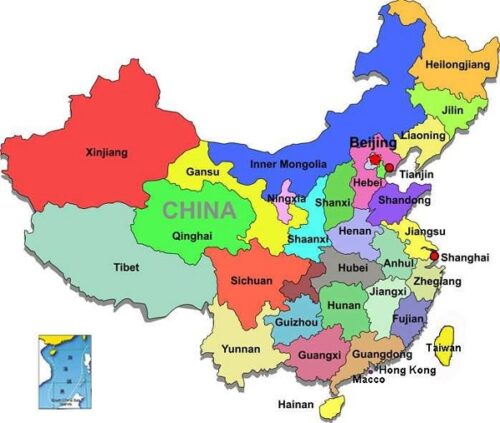 Latest figures show that the economy advanced 0.4% year on year in Q2 of 2022, missing market consensus of 1.0% and slowing sharply from a 4.8% growth in Q1. Lockdowns in major cities from March to May, including Shanghai, contributed to this slowdown.
However, in the first six months of the year, the economy grew by 2.5% and all things being equal, could in fact make the 5.5% target set by central government for the full year.
In the first seven months of the year, retail sales declined 0.2% compared to the same period in 2021, despite showing an increase of 2.7% in July (missing estimates of 5.0%) and 3.1% in June. The conclusion to be drawn from these two months is that if stores are open, the public will spend but are simply blocked from spending when lockdowns are applied.
Sales growth from June to July fell in almost all sectors and was negative in cosmetics, telecoms, clothing, footwear, fashion accessories, automobiles, furniture, and building materials.
Such across the board declines have also impacted western luxury brands as evidenced by Tapestry, Capri Holding, LVMH, amongst other whose results have improved in the west but suffered in China precisely because of the zero-covid policy.
Nevertheless, action is being taken in China to hold off further declines such as lowering business taxes and the interest rate.
The 8.1% GDP growth in 2021 was in part due to a rebound from the decline to just 2.2% growth in 2021. China will only slip into a technical recession if it displays two consecutive months of negative GDP growth.
Latest figures show that the economy advanced 0.4% year on year in Q2 of 2022, missing market consensus of 1.0% and slowing sharply from a 4.8% growth in Q1. Lockdowns in major cities from March to May, including Shanghai, contributed to this slowdown.
However, in the first six months of the year, the economy grew by 2.5% and all things being equal, could in fact make the 5.5% target set by central government for the full year.
In the first seven months of the year, retail sales declined 0.2% compared to the same period in 2021, despite showing an increase of 2.7% in July (missing estimates of 5.0%) and 3.1% in June. The conclusion to be drawn from these two months is that if stores are open, the public will spend but are simply blocked from spending when lockdowns are applied.
Sales growth from June to July fell in almost all sectors and was negative in cosmetics, telecoms, clothing, footwear, fashion accessories, automobiles, furniture, and building materials.
Such across the board declines have also impacted western luxury brands as evidenced by Tapestry, Capri Holding, LVMH, amongst other whose results have improved in the west but suffered in China precisely because of the zero-covid policy.
Nevertheless, action is being taken in China to hold off further declines such as lowering business taxes and the interest rate.
The 8.1% GDP growth in 2021 was in part due to a rebound from the decline to just 2.2% growth in 2021. China will only slip into a technical recession if it displays two consecutive months of negative GDP growth. 
使用條款 | 隱私政策 | APLF 可持續發展